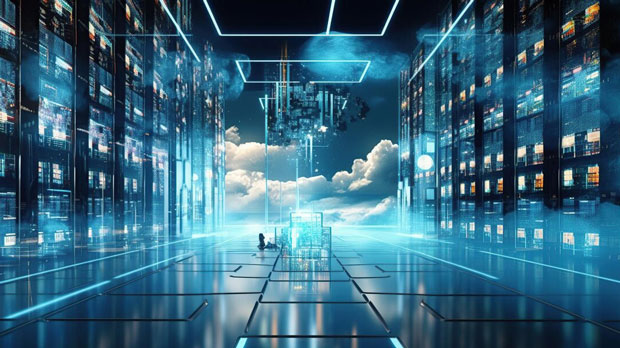In the era of increasing reliance on the internet for both personal and business activities, the quality of online connections plays a pivotal role. When considering the use of residential proxies, particularly PYPROXY in the UK, two critical factors need careful attention: latency and packet loss. These elements significantly impact the overall performance of residential proxy services, especially when operating over wireless networks. This article delves into how wireless networks can affect PYPROXY’s performance, focusing on latency and packet loss. We will explore the underlying reasons for these issues, their consequences on user experience, and how to mitigate them for optimal performance. Understanding Latency and Packet Loss in Wireless NetworksBefore diving into the specifics of PYPROXY's performance, it’s essential to understand the fundamental concepts of latency and packet loss, which are crucial for evaluating the efficiency of any internet connection.Latency refers to the time it takes for data to travel from the source to the destination. In the context of residential proxies, latency affects the time it takes for a request to be processed and a response to be received. A lower latency typically results in faster response times and smoother browsing experiences. On the other hand, packet loss occurs when data packets fail to reach their destination. Packet loss can severely disrupt the connection, leading to slow speeds, interruptions, and poor overall performance.Wireless networks, by nature, introduce several variables that can increase latency and lead to packet loss. These include signal interference, physical obstacles, network congestion, and device limitations.Factors Contributing to Latency and Packet Loss in Wireless NetworksSeveral key factors influence the performance of residential proxies over wireless connections, leading to increased latency and packet loss:1. Signal Interference: Wireless networks are highly susceptible to interference from other electronic devices, such as microwaves, cordless phones, and neighboring Wi-Fi networks. This interference can cause delays in data transmission, thereby increasing latency.2. Distance from the Router: The farther the device is from the wireless router, the weaker the signal becomes. As the signal weakens, the likelihood of packet loss increases, and latency becomes more pronounced. This is especially true in larger homes or offices with multiple walls between the device and the router.3. Network Congestion: Wireless networks often operate on shared bandwidth. If multiple devices are connected to the same network, the available bandwidth is divided among them, leading to increased latency. Additionally, during peak usage hours, congestion can lead to packet loss as the network struggles to handle the load.4. Wireless Standards and Device Capabilities: Older wireless standards, such as 802.11b/g, are slower and more prone to interference compared to newer standards like 802.11ac or Wi-Fi 6. The device’s ability to support high-speed wireless protocols also plays a significant role in determining latency and packet loss rates.Impact of Latency and Packet Loss on PY proxy residential Proxies UKThe performance of PYPROXY residential proxies in the UK is heavily influenced by the underlying wireless network’s latency and packet loss rates. Since residential proxies are often used for tasks like web scraping, anonymous browsing, and bypassing geo-restrictions, a high latency or significant packet loss can negatively affect user experience and the effectiveness of these activities.Impact of High Latency: High latency means that requests sent through the proxy server take longer to reach their destination and receive a response. For web scraping, this can result in delays in data extraction, which is crucial for businesses relying on up-to-date information. For activities like gaming or video streaming, high latency leads to buffering, lag, and interruptions.Impact of Packet Loss: Packet loss disrupts the flow of data between the device and the proxy server, causing incomplete or failed requests. In practical terms, this means slower connection speeds, interrupted web pages, and sometimes complete failure of online activities. For users involved in real-time communication, such as video conferencing or VoIP calls, packet loss can result in poor call quality, dropped connections, and delayed responses.Strategies to Mitigate Latency and Packet Loss in Wireless NetworksWhile wireless networks are inherently more prone to issues like latency and packet loss, there are several strategies to minimize these effects and improve the performance of PYPROXY residential proxies.1. Upgrade Wireless Hardware: Using the latest Wi-Fi standards, such as Wi-Fi 6, and investing in high-quality routers and devices can significantly reduce latency and packet loss. These newer technologies provide faster speeds, better coverage, and improved interference management.2. Optimize Router Placement: Positioning the wireless router in a central location, away from physical obstructions and electronic devices that cause interference, can help improve signal strength. Additionally, using routers with multiple antennas or mesh networks can extend coverage and reduce dead spots.3. Use Wired Connections: For critical applications requiring low latency and minimal packet loss, such as real-time communication or heavy data processing, switching to a wired Ethernet connection can eliminate the issues typically caused by wireless networks.4. Limit Network Traffic: Reducing the number of connected devices and limiting bandwidth-heavy activities like video streaming or large downloads can help alleviate congestion and reduce latency. Implementing Quality of Service (QoS) protocols on the router can prioritize traffic to critical devices, further improving performance.5. Monitor Network Performance: Regularly checking the network’s health, including its speed, signal strength, and congestion levels, can help identify issues early. Tools like network analyzers can help pinpoint sources of interference and packet loss, allowing users to make informed decisions about improving their setup.In conclusion, the performance of PYPROXY residential proxies in the UK, when used over wireless networks, is heavily influenced by factors such as latency and packet loss. Wireless networks, due to their susceptibility to interference, congestion, and signal attenuation, can pose challenges to the seamless functioning of residential proxies. However, by understanding the underlying causes and implementing strategies like hardware upgrades, optimal router placement, and network traffic management, users can significantly reduce latency and packet loss. These improvements will lead to a more reliable and efficient proxy experience, enabling users to take full advantage of residential proxies for various online activities.
Sep 15, 2025



































































